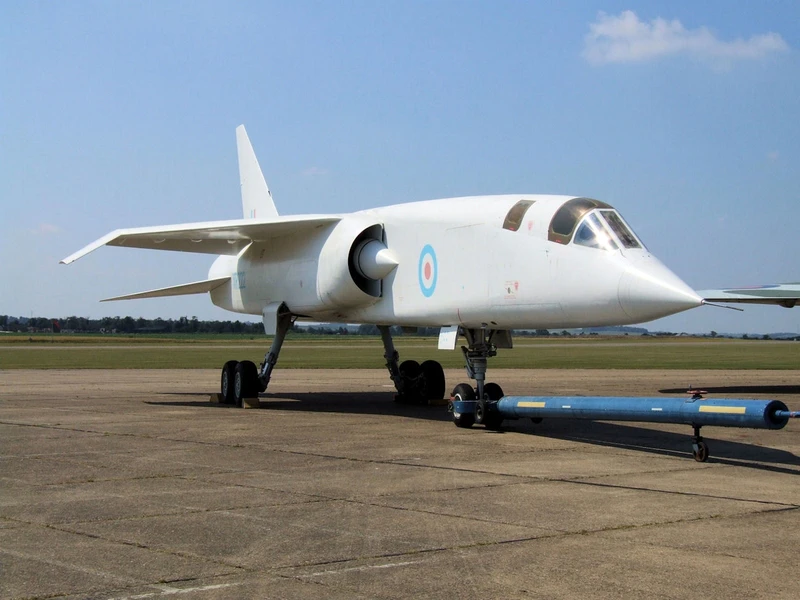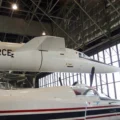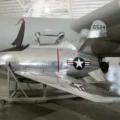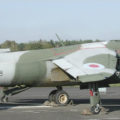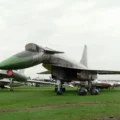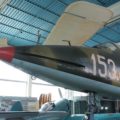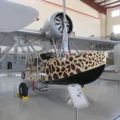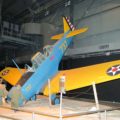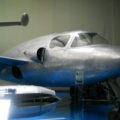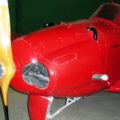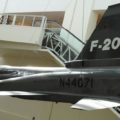The British Aircraft Corporation TSR-2 (for "Tactical Strike and Reconnaissance 2") var et aflyst angrebs- og rekognosceringsfly fra den kolde krig udviklet af British Aircraft Corporation (BAC) for Royal Air Force (RAF) i slutningen af 1950'erne og begyndelsen af 1960'erne. TSR-2 var designet til at trænge ind i et velforsvaret fremskudt kampområde i lave højder og meget høje hastigheder og derefter angribe mål af høj værdi bagi med atomvåben eller konventionelle våben. En anden tiltænkt kamprolle var at levere højhøjde, højhastighedsstand-off, sidevendt radar og fotografiske billeder og signalefterretninger og luftrekognoscering. Kun ét flystel fløj, og testflyvninger og vægtstigning under designet indikerede, at flyet ikke ville være i stand til at opfylde sine oprindelige strenge designspecifikationer. Designspecifikationerne blev reduceret som følge af flyvetest.
Kilde: BAC TSR-2 på Wikipedia
Flere oplysninger:
Den BAC TSR-2 was a cancelled Cold War strike and reconnaissance aircraft developed by the British Aircraft Corporation (BAC) for the Royal Air Force (RAF) in the late 1950s and early 1960s. The TSR-2 was designed to penetrate well-defended frontline areas at low altitudes and very high speeds, and then attack high-value targets in rear areas with conventional or nuclear weapons. It was also capable of high-altitude, high-speed reconnaissance missions with advanced sensors and cameras. The TSR-2 was a highly advanced and complex aircraft, featuring a variable-geometry wing, a powerful radar, a terrain-following system, an electronic countermeasures suite, and a sophisticated navigation and weapon-aiming computer.
The TSR-2 was powered by two Bristol Siddeley Olympus 22R turbojet engines with afterburners, giving it a maximum speed of over Mach 2. The TSR-2 had a large internal bomb bay and four underwing pylons for carrying up to 4.5 tonnes of ordnance. The TSR-2 project faced many technical and political challenges, as well as rising costs and inter-service rivalry. Only one prototype flew, making 24 test flights between September 1964 and March 1965. The project was controversially cancelled in April 1965 by the Labour government, which decided to order an adapted version of the American General Dynamics F-111 instead. However, this decision was also reversed later, leaving the RAF without a suitable replacement for its ageing Canberra bombers. The TSR-2 remains one of the most famous examples of a cancelled British aircraft project, and a symbol of the decline of the British aerospace industry in the 1960s.
